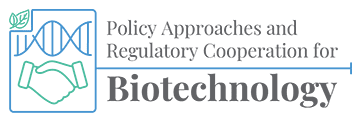Description
Information sharing is the most easily implemented and commonly employed approach to regulatory cooperation. It is simply the provision of relevant information by organizations or agencies between member economies, accomplished through general broadcasting of information or more targeted direct communication, either of which can be tailored to different situations to accomplish specific goals. Broadcasting may be general for ‘public communication’ with no specific audience in mind or it can be more limited to a select group. Information can also be shared directly by an individual or organization specifically to another individual or organization, not intended for sharing outside the targeted audience. In the case of direct communication, there is often the expectation of a response. Some different types of information sharing are described below. It should be noted that while information sharing can be an effective approach to regulatory cooperation, it will also occur implicitly as part of other more advanced approaches that are discussed in the sections on policy alignment and risk/safety assessment collaboration.
Agency Postings of Regulatory Information
Most regulatory authorities will make information publicly available for stakeholders through an agency website and/or by posting in national registers or other federal listings. Information shared will typically include policies, guidelines, and decisions, with more or less detail determined by the needs of the agency.
Biotechnology Regulatory-Related Databases
There are a number of databases that contain policies, risk/safety assessments, authorizations, and dossiers. For example:
The Biosafety Clearing-House (BCH) of the Convention on Biological Diversity is an online platform for exchanging information on Living Modified Organisms (LMOs) and a key tool for implementation of the Cartagena Protocol on Biosafety
The Food and Agriculture Organization (FAO) has multiple databases and platforms related to biotechnology, including:
- FAO-BioDeC is a database that collects, organizes, and shares information on crop biotechnology products and techniques used or being developed in developing economies.
- FAO Biotechnology Forum is a platform that provides access to information and a neutral space for stakeholders to exchange views on agricultural biotechnologies in developing economies.
- FAO GM Foods Platform is a publicly accessible central database that contains information on recombinant-DNA plants authorized in accordance with the Codex Plant Guideline.
The International Service for Acquisition of Agri-biotech Applications (ISAAA) hosts the GM Crop Approvals database that includes all available information on biotech/GM crops that have been approved for food and feed use and/or cultivation globally.
The Organization for Economic Cooperation and Development (OECD) has several databases related to biotechnology, including:
BioTrack Product Database allows stakeholders to share information about products from modern biotechnology and other products with novel traits that have been approved for commercial use in at least one member economy.
Emerging Technology Indicators is a database that combines measures of the number of companies active in biotechnology, R&D expenditure, and inventions.
Data Sharing/Data Transportability
Member economies can establish standardized mechanisms for the sharing of regulatory data, and this can be a particularly effective form of regulatory cooperation. The concept of ‘data transportability’ has gained interest among the regulatory and product developer communities in recent years. The concept is centered around the notion that data from well-designed regulatory studies following accepted methods for data collection, especially for comparison of GM plants to their conventional counterparts, submitted for a regulatory decision in one jurisdiction can be used for risk/safety assessment in another jurisdiction. Transportation of data for risk/safety assessments has been used effectively in multiple economies to increase regulatory efficiency and eliminate redundancy.
Information Sharing and Capacity Building
Regulatory coordination in the form of information sharing can also be accomplished by APEC member economies through arranged capacity building, when member economies with more experience are willing to provide information on policies, processes and decisions taken to economies with less experience through consultations, seminars, workshops, study tours, internships, and other methods.
